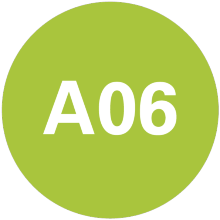Publications
Conference Papers
- Härter, J., Steinhausen, C., Poser, R., & Lamanna, G. (2023). Mass transfer measurements of a self-pumping transpiration cooling system. 11th International Conference on Multiphase Flow (ICMF 2023). https://doi.org/10.5281/zenodo.15199942
- Härter, J., Steinhausen, C., Poser, R., Lamanna, G., & Weigand, B. (2023). A Fourier-transform approach for fringe pattern analysis for a Mach-Zehnder interferometry measurement on surface evaporation of saturated porous media. 15th Annual International Conference on Porous Media. https://doi.org/10.5281/zenodo.15200116
- Härter, J., Poser, R., Weigand, B., & Lamanna, G. (2022). Impact of Porous-Media Topology on Turbulent Fluid Flow: Time-Resolved PIV Measurements. Proceedings of the International Symposium on the Application of Laser and Imaging Techniques to Fluid Mechanics, 20, 1–12. https://doi.org/10.55037/lxlaser.20th.80
Journal Articles
- Härter, J., Martínez, D. S., Poser, R., Weigand, B., & Lamanna, G. (2023). Coupling between a turbulent outer flow and an adjacent porous medium: High resolved Particle Image Velocimetry measurements. Physics of Fluids, 35, Article 2. https://doi.org/10.1063/5.0132193
Research
About this project
Project A06 explores self-pumping transpiration cooling (SPTC), a passive cooling concept for high-temperature applications like rocket engines or gas turbines. SPTC relies on capillary forces in porous media to transport liquid coolant without pumps, while simultaneously adjusting the cooling rate automatically to thermal loads. The project focuses on understanding interfacial transport processes under non-isothermal, evaporative conditions. Using a modular test facility and advanced optical diagnostics (IR thermography, PIV, LITA, interferometry), A06 investigates how porous structure, heat flux, and surface conditions influence cooling efficiency. The findings support model development and enable the design of tailored, additively manufactured cooling elements.
Results
Funding Period 1
Project A06 was not yet part of the SFB 1313 during the first funding phase.
Funding Period 2
In the current (second) funding phase, Project A06 focused on the development and implementation of an experimental platform to investigate SPTC under realistic conditions. A modular test rig was designed to allow systematic variation of thermal and flow boundary conditions, as well as exchangeable porous samples with defined topologies. Sintered bronze samples with pore sizes between 55 and 105 μm were used, and capillary-driven wetting was achieved through a Mariotte bottle setup, enabling controlled evaporation without external pumps.
A key objective was the development of non-intrusive measurement techniques suitable for porous interfaces. Infrared thermography was adapted using a differential method to locally determine emissivity, allowing accurate surface temperature mapping under phase-change conditions (see Figure 1). Interferometry was employed to quantify vapor concentration fields based on fringe pattern shifts caused by evaporation, with a custom Fourier-based post-processing procedure.
For velocity measurements near the irregular interface, conventional PIV approaches were limited due to strong reflections. To overcome this, an in-line PIV configuration was developed and successfully applied, enabling high-resolution flow field acquisition close to the porous surface (Figure 2). Further improvements were achieved using high-dynamic range sCMOS cameras.
Initial test campaigns explored a range of working fluids (e.g. water, isopropanol, Novec) and thermal boundary conditions. Early comparative studies with A02 showed good agreement between experimental temperature profiles and digital twin simulations based on μXRCT scans from Z02. In collaboration with C05, first feasibility studies on salt precipitation under evaporative conditions were conducted, building the foundation for cross-disciplinary investigations in the third funding phase.
Future Work
In the third funding phase, Project A06 will continue the experimental investigation of self-pumping transpiration cooling (SPTC), with a focus on structured porous media manufactured via additive processes. The primary aim is to understand how different geometries, such as gyroid and graded structures, influence capillary-driven liquid transport, interfacial evaporation, and local heat and mass transfer. These structures will be analyzed under varying thermal and flow conditions, using the advanced diagnostic techniques established in the second phase, including in-line PIV, infrared thermography, and interferometry.
Another research focus is the effect of internal flow obstructions on SPTC performance. To this end, defined blockage scenarios will be introduced to experimentally study how localized fouling impacts coolant distribution, evaporation rate, and cooling uniformity. These scenarios are motivated by technical challenges encountered in high-temperature applications such as gas turbines, where fouling due to particles or salt can lead to a degradation in performance. The experimental findings will be evaluated in collaboration with project A02 and compared to numerical predictions.
Finally, the project will address salt precipitation as a specific form of surface fouling. The formation and growth of salt crusts under evaporative conditions will be studied in cooperation with Projects C05, Z02, and D03. These activities contribute to the CRC’s vision topic on salt and aim to provide detailed experimental data on the interaction between salt accumulation, interfacial flow, and thermal boundary layers.
International Cooperation
Institute of Combustion Technology for Aerospace Engineering (IVLR) - DLR, Germany
The feasibility of using selective laser melting (SLM) for SPTC applications, as shown exemplary in Figure 3 (left), will be explored jointly with our national collaborator Fabian Hampp at the DLR Stuttgart in FP 3.

Grazia Lamanna
Dr.-Ing.Project Leader, Research Project A06, Project MGK

Rico Poser
Dr.-Ing.Project Leader, Research Project A06





